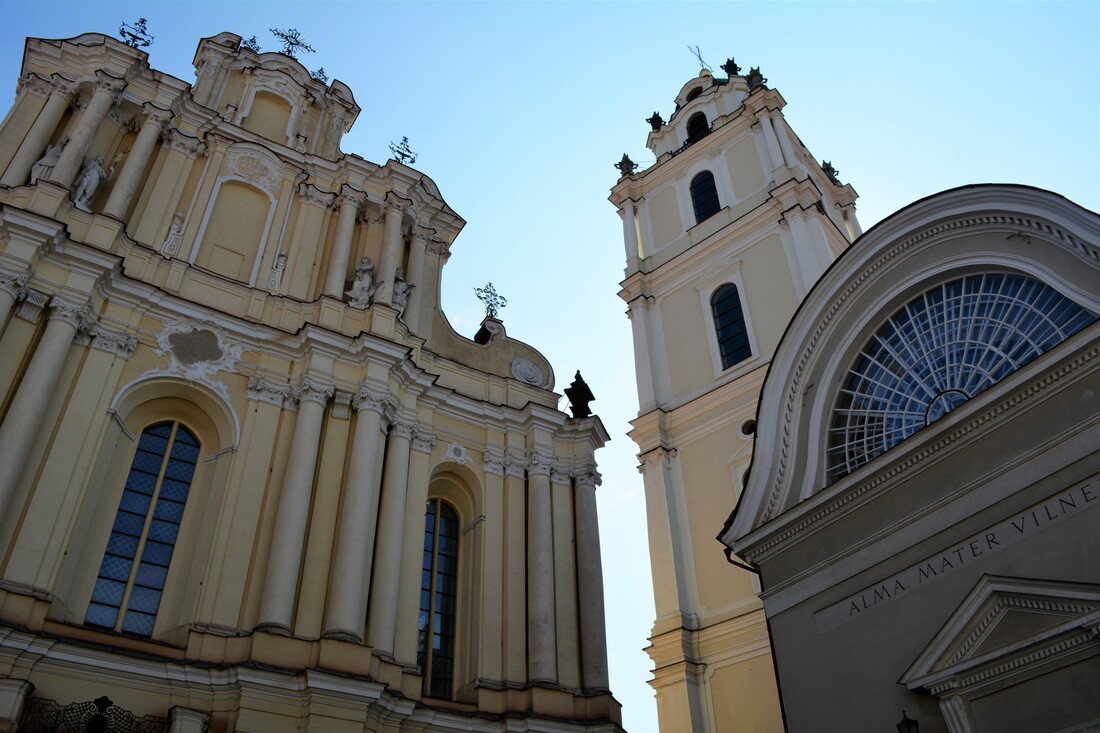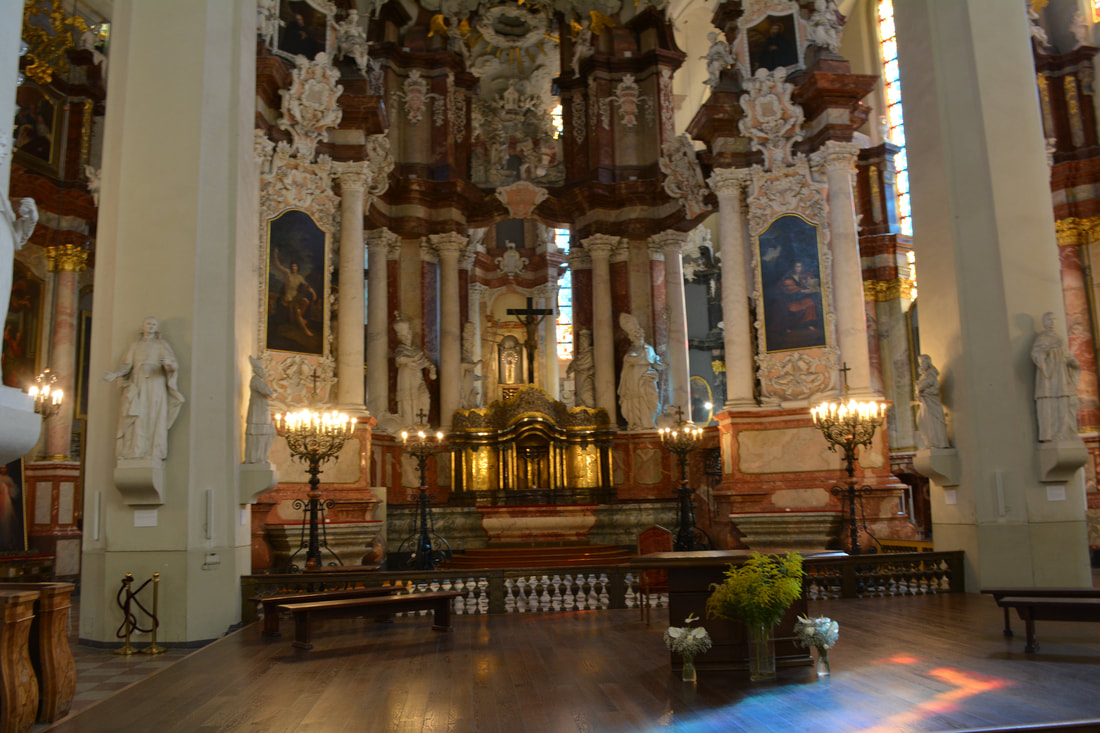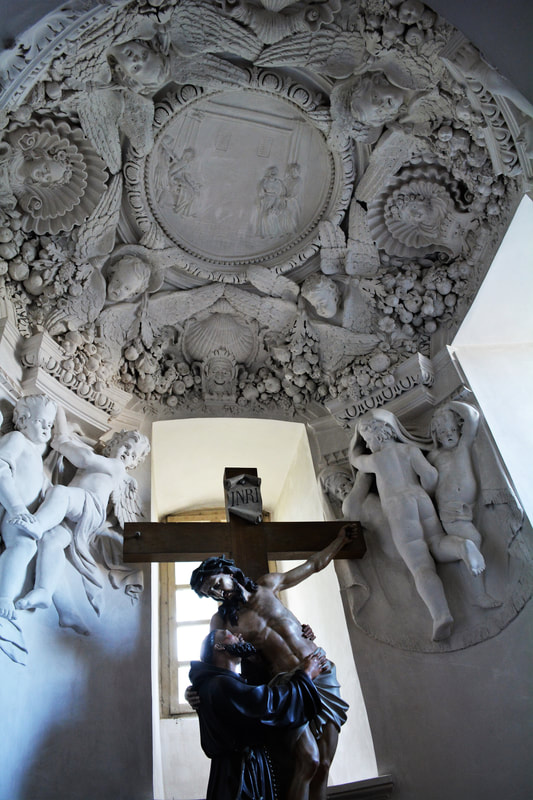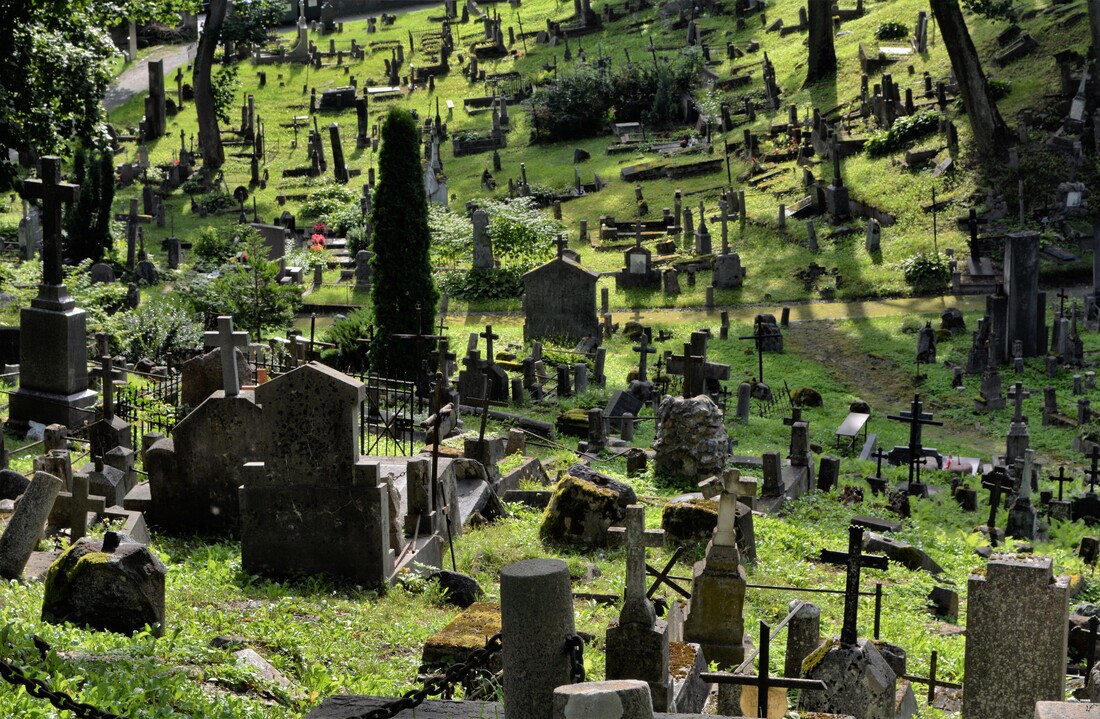what is Lithuanian literature?
Curious enough, a great deal of Lithuanian literature is written in Latin. This is valid not only for the 13th-century edicts of the king Mindaugas but also for the Renaissance and Baroque poetry. One quite unique item is a song of the bison, Carmen de statura, feritate ac venatione bisontis by Nicolaus Hussovianus (around 1480-after 1533); together with the description of the animal comes the characterization of the country, its usages, and its divided loyalties over paganism and Christianity. The most important among those Latin poets was a Pole as much as a Lithuanian, Matthias Sarbievius (1595-1640); he gave his contribution to the Lithuanian culture by mentioning local mythology together with the classicist evocation of the Roman gods. By the way, many people came to Lithuania from somewhere else, there was also a poet of Swedish (Boierus Laurentius) and even of Spanish descent (Petrus Roysius Maurus Alcagnicensis). In the 16th century, this part of the world was a kind of European proto-colony, a new place where many people were coming in search of good luck.
Yet the 16th century was also the beginning of literature in Lithuanian. Just like in other parts of Europe, one of the aspirations of the Renaissance was to enrich and illustrate the local tongue. A person implied in this work was one of the first professors of the Königsberg Albertina University, Abraomas Kulvietis. Also, the print came to this part of Europe relatively early, around the middle of the 16th century. As the 16th and 17th centuries were the periods of fierce competition between Catholics and Calvinists, the greater part of the literature written dealt with religious and confessional matters. One of the famous 17th-c. Lithuanian books was Knyga nobažnystės krikščioniškos, of Calvinist inspiration.
Later on came the partition of the Polish-Lithuanian Commonwealth and the dominance of Russia. Later on, in the 19th century, it banned all printing in Lithuanian and the use of Latin characters for a period of 40 years. This is why the printing industry moved to East Prussia, from where some books were smuggled into Lithuania. The ban was lifted as late as 1904, and Lithuanian literature suddenly jumped right into the modernity and the urgency of creating a new national culture for the interwar independent Lithuanian state (1918-1940). The figure that grew to the role of the great prophet of the national revival was Maironis (1862-1932), a Catholic priest, a poet, and the author of the new education program for Lithuanian schools.
The interwar period was the heyday of Lithuanian creativity. Soon more tragedies were to come, and also more episodes of cultural cleansing. No wonder there is a lot of Lithuanian literature created in the diaspora, including the English-speaking novels of Ruta Sepetys, a writer born in the United States, but claiming a Lithuanian identity. I return to her book below.
Yet the 16th century was also the beginning of literature in Lithuanian. Just like in other parts of Europe, one of the aspirations of the Renaissance was to enrich and illustrate the local tongue. A person implied in this work was one of the first professors of the Königsberg Albertina University, Abraomas Kulvietis. Also, the print came to this part of Europe relatively early, around the middle of the 16th century. As the 16th and 17th centuries were the periods of fierce competition between Catholics and Calvinists, the greater part of the literature written dealt with religious and confessional matters. One of the famous 17th-c. Lithuanian books was Knyga nobažnystės krikščioniškos, of Calvinist inspiration.
Later on came the partition of the Polish-Lithuanian Commonwealth and the dominance of Russia. Later on, in the 19th century, it banned all printing in Lithuanian and the use of Latin characters for a period of 40 years. This is why the printing industry moved to East Prussia, from where some books were smuggled into Lithuania. The ban was lifted as late as 1904, and Lithuanian literature suddenly jumped right into the modernity and the urgency of creating a new national culture for the interwar independent Lithuanian state (1918-1940). The figure that grew to the role of the great prophet of the national revival was Maironis (1862-1932), a Catholic priest, a poet, and the author of the new education program for Lithuanian schools.
The interwar period was the heyday of Lithuanian creativity. Soon more tragedies were to come, and also more episodes of cultural cleansing. No wonder there is a lot of Lithuanian literature created in the diaspora, including the English-speaking novels of Ruta Sepetys, a writer born in the United States, but claiming a Lithuanian identity. I return to her book below.
I have readRuta Sepetys, Salt to the Sea (2016)
|
Vertical Divider
|
I have written... nothing ...
|
a broken alience |
|
Vertical Divider
|
Lithuania is one of those countries that are almost invisible from Poland. Is it? Did not Mickiewicz said... And even more importantly, Miłosz? It should be the familiar Europe (Rodzinna Europa). It is not.
There was a Polish-Lithuanian Commonwealth, but it was in the Middle Ages. In the Renaissance. Well, in any case, the whole was completely obliterated by Partitions, in the end of the 18th century. Both countries, Lithuania and Poland, regained their independence after the First World War, but it wasn't a time of getting together once more. On the contrary, there was a Polish-Lithuanian War, a historical episode about which --I swear on the innocence of my ignorance-- I first knew about from an English-speaking podcast on Youtube. No one ever mentioned any Polish-Lithuanian war whatsoever all along my school years; (as I've noticed, it tends to be referred euphemistically as "konflikt" in Polish-speaking publications). Mickiewicz and Miłosz are, of course, Polish writers. The real Lithuania must be hidden beneath, invisible precisely because of the voice they had given to her, to that water snake that did not deserve the stone to be thrown. To that Lithuanian Paradise lost. A z ciężkich moich grzechów jeden najlepiej pamiętam: Jak przechodząc raz leśną ścieżką nad potokiem Zrzuciłem duży kamień na wodnego węża zwiniętego w trawie. I used to read Miłosz passionately in my youth, and it seemed to me that I saw Lithuania so distinctly through his poetry, as a mythic land, beyond time, history, the usual dimensions of "the flat map", as I wrote in one of my books (it was on that "flat map" that the Polish-Lithuanian war was to be waged, without touching the primordial reality of the snake). Miłosz's Lithuania is a bubble of intimacy bulking into another dimension. The real Lithuania is hard to find in Poland, and I feel partially excused of ignoring it so completely. I doubt if we have Lithuanian or Baltic studies at any of our universities; at least in twenty years of my presence in Polish academic milieu, I've never heard about them. I don't remember having seen any Lithuanian novel translated. There was a time someone tried to launch some Lithuanian food products on the Polish market, some sort of local hams. But apparently they failed to gain any popularity. Leiden, 29.04.2019 - Kraków 18.08.2021. |
Vilnius
church of St. Johns
the Cathedral of Vilnius
church of St. Peter and St. Paul
Rasos Cemetery
the rest of the city
Trakai
the Karaites
the Castle of Trakai
To a considerable degree, the Castle of Trakai is a reconstruction. Its former ruin explains the lack of original items in its interiors. The exposition is thus a rather makeshift one, bringing together someone's safari trophies, a collection of pipes and elegant stamps with aristocratic coats of arms. On the other hand, there is a visible, and rather happy attempt to fill the castle with contemporary works of art, in reference to Lithuanian history. I believe it is indeed the best option, and particularly enjoy a great canvas under the title "Vytautas the Great awaiting the crown" (2013), by Giedrius Kazimierenas.
salt & sea
I think it is a valuable habit to enter a bookshop everywhere I go, and to bring a book as a souvenir. Alas, I found no bookshop in Vilnius; there must have been many, but somehow I didn't happen to find them. I bought my Lithuanian book in Riga, but it doesn't really matter. The book is generally Baltic, and written in America, by Ruta Sepetys who is just a descendant of a Lithuanian, born in Michigan. The story she counts is about those interstices of History, about those people who are in-between and lose the place of their own so easily. The narration is made easy to ingest, brought in small portions. There are several personages, young people, and each of them is made to talk separately. They are from various parts of the puzzle, except one. There is no Russian. The Russians are not personages, they are the danger, they are the rapists, they are the ones who come. The personages are those who flee, even if they happen to be Germans, or Baltic Germans, or Prussians, still a little bit charmed by Nazi ideology, or guilty of their connivance in some crime or another, such as stealing the works of art, and similar. There is the famous Amber Chamber in the background.
So this is how one reads it, by small bytes, because the stories are shocking. Like being drawn under the ice, like giving birth to a rapist's child, like simply being there, sorting the wounded soldiers into those who will be taken into the evacuation and those who will be left to die. The big objective is to get on the ship due to a German port. They don't know, of course, that Wilhelm Gustloff will sink. By the way, I didn't know either that it was the biggest catastrophe in maritime history, bigger than the Titanic.
So here it is, a shocking book that I read section by section, using as a bookmark a postcard from Riga, representing the Musicians from Bremen (the Grimm Brothers' animals who left their farm convinced that they might earn a good living making music). This is how the book is written, a donkey, a rooster, a dog, a cat: a Prussian, a Pole, a Lithuanian, a Baltic German, running away from the Russians into an unknown catastrophe.
Ruta Sepetys, Salt to the sea, London: Penguin Books, 2016.
Kraków, 29.06.2022.
So this is how one reads it, by small bytes, because the stories are shocking. Like being drawn under the ice, like giving birth to a rapist's child, like simply being there, sorting the wounded soldiers into those who will be taken into the evacuation and those who will be left to die. The big objective is to get on the ship due to a German port. They don't know, of course, that Wilhelm Gustloff will sink. By the way, I didn't know either that it was the biggest catastrophe in maritime history, bigger than the Titanic.
So here it is, a shocking book that I read section by section, using as a bookmark a postcard from Riga, representing the Musicians from Bremen (the Grimm Brothers' animals who left their farm convinced that they might earn a good living making music). This is how the book is written, a donkey, a rooster, a dog, a cat: a Prussian, a Pole, a Lithuanian, a Baltic German, running away from the Russians into an unknown catastrophe.
Ruta Sepetys, Salt to the sea, London: Penguin Books, 2016.
Kraków, 29.06.2022.






























